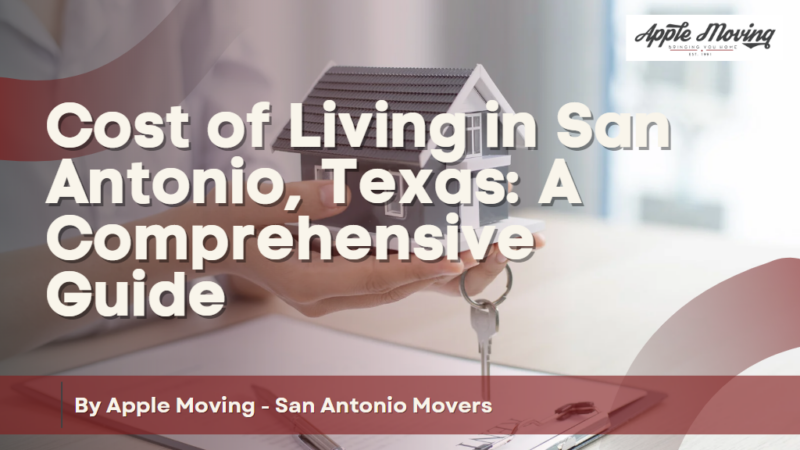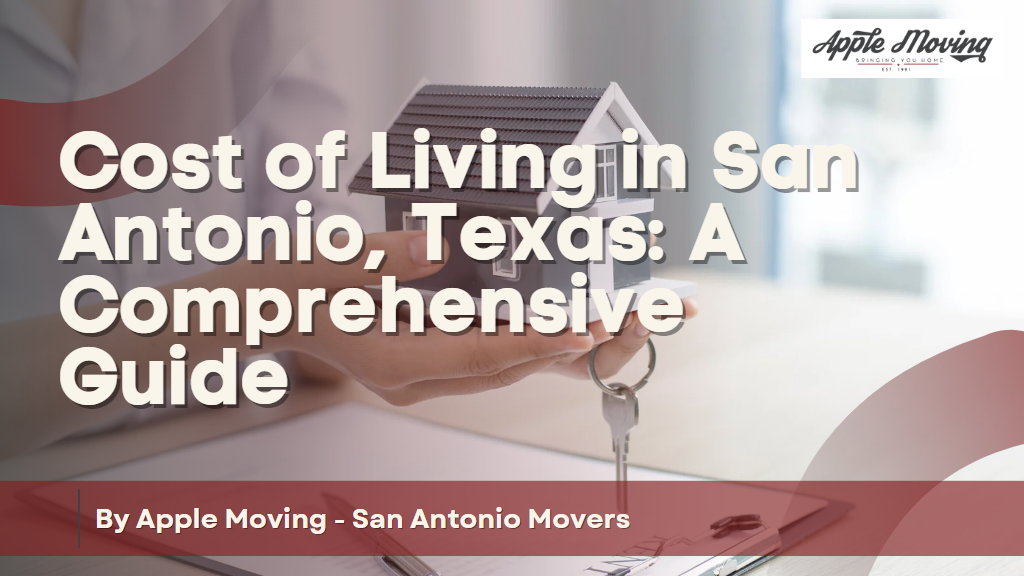Cost of Living in San Antonio, Texas: A Comprehensive Guide
Before deciding, it’s critical to comprehend the cost of living in San Antonio, Texas, if you’re new to the area or considering moving there. San Antonio is a thriving city with a diverse culture, unique founder, lovely parks, and top-notch cuisine, but it has a cost. San Antonio’s cost is often cheaper than other large American cities. Before settling into a new house, it’s crucial to understand what you’re getting into.
Knowing the local cost of living is crucial if you’re considering moving to San Antonio, Texas. Expenses may impact your accommodation, transportation, food, and medical care budget. This is a detailed guide on San Antonio’s cost of living to aid your financial planning.
Cost of Housing
- Average Rental Prices in San Antonio
The typical rental cost for a one-room condo in San Antonio is around $1,000 monthly, while a two-room loft can cost upwards of $1,300 monthly. In any case, these costs can change contingent on the area and conveniences. Regions like Alamo Heights and Stone Oak often have higher rental costs, while neighborhoods like West San Antonio and Upper east San Antonio offer more reasonable choices. It’s essential to consider your spending plan and way of life while picking a spot to live in San Antonio.
- Average Home Prices in San Antonio
The average home price in San Antonio is around $240,000, which is relatively affordable compared to other major cities in the US. However, the price may vary depending on the neighborhood you choose. Areas like Alamo Heights and Stone Oak have higher price tags, while West Side and South Side neighborhoods are more affordable. Renting a one-bedroom apartment in San Antonio costs around $1,000 monthly, and utilities are reasonably priced.
- Homeownership Costs in San Antonio
The cost of homeownership in San Antonio is relatively affordable compared to other major cities in the United States. The median home price in the city is $218,000, which is lower than the national median home price of $266,000. However, renting in the city is slightly higher than the national average, with an average one-bedroom apartment costing around $950 per month. When finding housing in San Antonio, it is essential to do your research and compare prices to ensure that you find a place that fits your budget.
- Additional Considerations for Housing in San Antonio
It’s crucial to consider additional housing-related expenses like utilities, maintenance, and insurance because they may mount up rapidly. The price of a home in San Antonio will ultimately rely on your budget and individual requirements.
Cost of Groceries and Dining Out
- Cost of Groceries
Considering the cost of living in San Antonio, Texas, it’s essential to factor in the cost of groceries. The average cost of groceries in San Antonio is slightly lower than the national average, making it a relatively affordable city for food expenses. However, prices can vary depending on where you shop and what you buy, so it’s essential to research and compares prices at different grocery stores.
- Dining Out Prices
A meal at a mid-range restaurant for two will cost around $50, while a three-course meal for two at a high-end restaurant can cost upwards of $100. Fast food chains are also popular and provide affordable meal options. Happy hour deals and lunch specials are readily available throughout the city for those looking to save money.
- Local Farmers’ Markets
These markets offer fresh, locally grown produce at competitive prices and provide a unique opportunity to support the community while reducing your grocery bill.
Cost of Transportation
- Public Transit Options
San Antonio offers a range of public transit options, including buses, trolleys, and streetcars. A single ride on the bus or streetcar is $1.30, while a day pass can be purchased for $2.75. If you plan to use public transit frequently, a monthly pass may be your best option at $38 a month. There are also options for bike-sharing and ride-sharing services like Uber and Lyft.
- Vehicle Ownership Costs
Owning a vehicle in San Antonio can be expensive, with the average cost of a new car ranging from $20,000 to $40,000. This doesn’t include additional expenses such as insurance, gas, and maintenance. Public transportation is available through the VIA Metropolitan Transit system, with a one-way fare costing $1.30. If you’re a frequent rider, purchasing a monthly pass for $38 can save you money in the long run.
- Parking and Fuel Costs
A gallon of gas in San Antonio costs around $2.20, which is relatively cheaper than the national average. However, parking costs can vary depending on the location and duration. The monthly parking rates in downtown San Antonio range from $100 to $200. If you plan to use public transportation, a monthly pass for VIA Metropolitan Transit costs around $38, which is more affordable than in most major cities.
Cost of Healthcare and Insurance
- Health Insurance Marketplace
The Health Insurance Marketplace offers various insurance options for individuals and families at different prices. Depending on your income, you may qualify for financial assistance to help cover the cost of insurance premiums. However, it’s essential to note that healthcare costs can vary depending on the type of care you need and the provider you see.
- Average Healthcare Costs
The average healthcare costs in the city are relatively affordable compared to other major metropolitan areas. Without insurance, these costs can quickly add up. It’s crucial to ensure adequate health insurance coverage to avoid unexpected expenses. The insurance cost varies depending on the policyholder’s age, pre-existing condition, and selected coverage type.
- Affordable Care Act
The Affordable Care Act has made obtaining health insurance easier for individuals and families, but costs still vary depending on factors like age, income, and medical history. Those with employer-provided insurance can expect to pay around $150-$250 per month for individual coverage, while family coverage can range from $500-$1,500 per month.
- Medicare Coverage
If you are eligible for Medicare coverage, you may be able to receive affordable healthcare options. However, private health insurance plans may come with a higher price tag. Researching and comparing different insurance plans is vital to find the one that fits your needs and budget.



